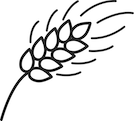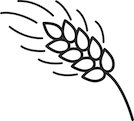Grief, Bereavement, and Coping with Loss (1 credit hour)
Program Summary: This course explores evidence and practice issues related to grief, bereavement, and coping with loss. The course compares different types of grief reactions and includes models of normal grief, patterns of complicated grief, and risk factors for complicated grief. Using the DSM-5, the course differentiates a normal grieving process from a major depressive episode. Treatment considerations are discussed. In addition, the course looks at the grief experiences of medical providers as well as grief in children.
The new diagnosis of prolonged grief disorder (PGD) with diagnostic criteria was added to the DSM-5-TR in March of 2022. It is classified as a trauma and stressor related disorder and characterized by “intense longings for the deceased or preoccupation with thoughts of the deceased.”(Please see APA Offers Tips for Understanding Prolonged Grief Disorder for more information). The diagnosis of prolonged grief disorder has supporters and critics. Supporters contend that a DSM diagnosis allows for important treatment, research and funding; critics voice concerns related to pathologizing a human emotional response.
This course is recommended for social workers and counselors and is appropriate for beginning and intermediate levels of practice.
Reading: Grief, Bereavement, and Coping with Loss (PDQ) Publisher: National Cancer Institute
Course Objectives: To enhance professional practice, values, skills and knowledge by exploring grief, bereavement, and coping with loss.
Learning Objectives: Compare normal, complicated, and anticipatory grief. Describe treatment considerations for complicated grief. Differentiate a normal grieving process from a major depressive episode. Describe grief in children.
Review our pre-reading study guide.
G.M. Rydberg-Cox, MSW, LSCSW is the Continuing Education Director at Free State Social Work and responsible for the development of this course. She received her Masters of Social Work in 1996 from the Jane Addams School of Social Work at the University of Illinois-Chicago and she has over 20 years of experience. She has lived and worked as a social worker in Chicago, Boston, and Kansas City. She has practiced for many years in the area of hospital/medical social work. The reading materials for this course were developed by another organization.





